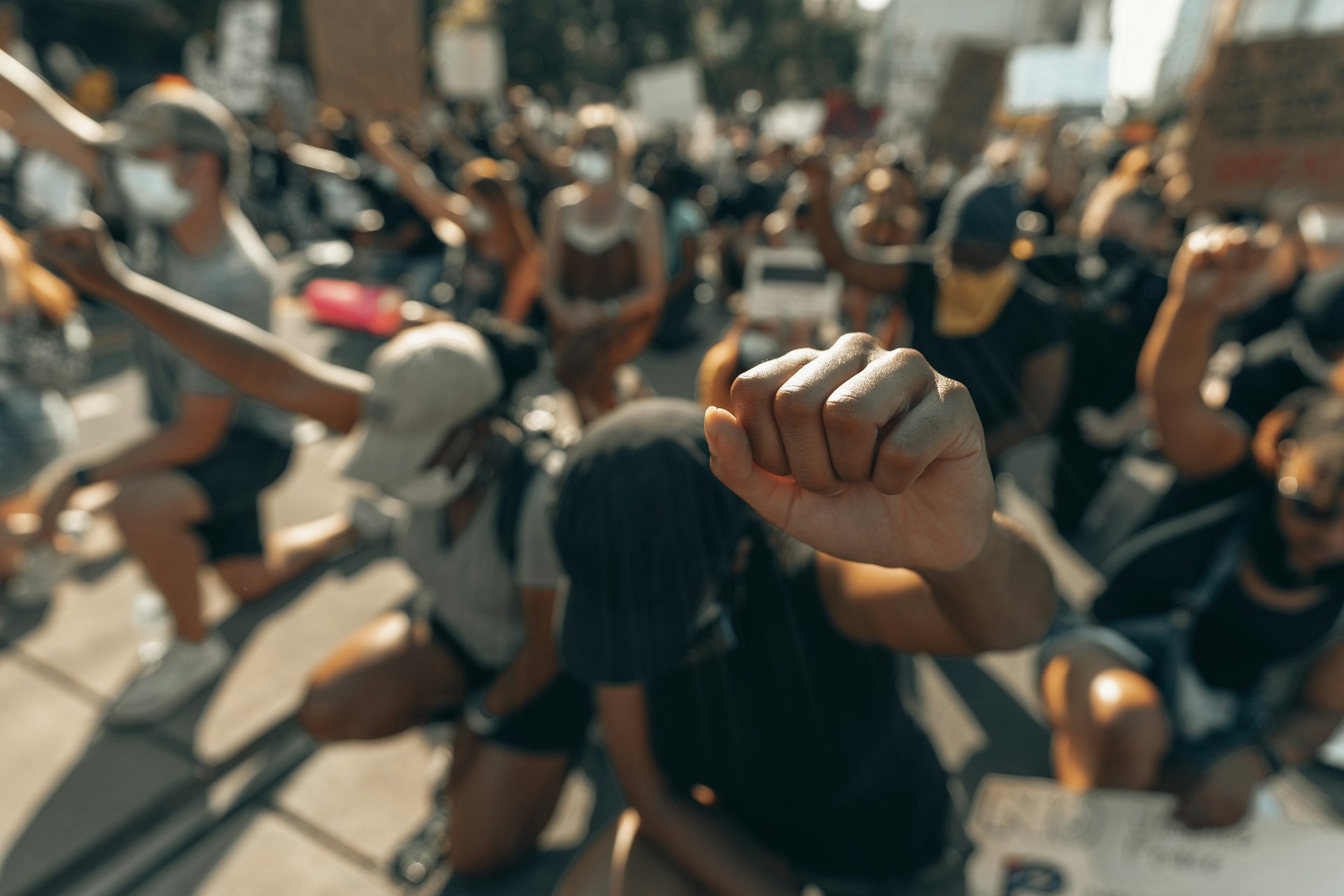I. Introduction
Over half of all inmates within prisons and jails in the United States are parents to minors, leaving an estimated 2.7 million children alone in the most formative years of their lives. That is 1 in every 28 children – essentially one student out of every class at a school. About 19 percent of these children are 4 years of age or less, forced into a life of struggle before entering kindergarten. There are countless systemic barriers separating parents from their children – whether that is legislation preventing reunification after their release or the obstacles present in simply arranging for an in-person visit. The scale of this issue is only worsening; since the 1980s, the rate of children with incarcerated mothers has doubled. Action must be taken immediately to counter the social, physical, and psychological effects faced by these children, working to improve the futures of these “hidden victims” of mass incarceration.
II. Cognitive and health-related challenges
Research indicates that children of incarcerated parents are more likely to face cognitive struggles in the future. One study employed mothers recruited from a minimum security state prison and their children, analyzing the number and types of risks (such as substance abuse or domestic violence) present in their lives. Eighty-eight percent of these children experienced four or more risks, with nearly half of them having been prenatally exposed to substances. General results found that children of incarcerated mothers experienced risks at various contextual levels, with their intellectual outcomes compromised in relation to their high-risk status. These cognitive consequences have major effects in the real world, often exacerbating the difficulty a child faces in school. The numbers support this fact, as 23 percent of children with an incarcerated father have been expelled or suspended from school, compared to only 4 percent of children who are not living under these circumstances. As education can be such a determining influence on economic mobility, such struggles can prove to be a major obstacle to future success. Screening children for developmental concerns after a parent is incarcerated may be a way to rectify this issue, proactively accounting for their well-being before harm can amass.
Parental incarceration may also have many physical and psychosocial impacts on affected children as well. A meta-analysis of 40 different studies reviewing this displayed that antisocial behaviors were present more consistently than any other factors, including mental health issues and drug use. Positive associations have also been found between parental incarceration and health problems such as depression, anxiety, PTSD, cholesterol, asthma, migraines, and HIV/AIDS. Providing additional services to caregivers through assistance programs for medical bills, support groups, and other guiding materials could be effective in helping children thrive under these conditions. Increased funding should also be invested in psychological research to further explore the best ways to cope with social stigma, deal with trauma, and learn how to maintain robust family connections from a distance.
III. Obstacles impeding familial reunification
Many laws in place pose unintended consequences to incarcerated parents, preventing families from legally reunifying after release. After a parent(s) is imprisoned, the custody of their child is typically given to family members. If this is not an option, then they are put into foster care – the reality of at least 4 percent of children in this situation. Federal policy fails to account for the realities of lengthy prison sentences, making it extremely likely for separation to occur permanently. In fact, in 1 of 8 cases where children of incarcerated parents are assigned to foster care, parental rights are lost, no matter the severity of the offense. One piece of legislation accounting for this is the federal Adoption and Safe Families Act (ASFA) of 1997, which forces states to file a petition terminating parental rights once a child has been in foster care for 15 of the prior 22 months – a noble effort meant to permit adoption as soon as possible. However, when the median minimum sentence for non-violent drug offenses (the number one reason for maternal incarceration) is an astonishing 36 months, confined parents are powerless against this legislation, crushing the hope of any future family reunification.
Although a few exceptions to ASFA do exist, they are primarily left to the discretion of a caseworker, no matter how pressing. Case-by-case considerations are not typically made; instead, the unchanging nature of time is, which often fails to account for the specific nuances of a case. Still, change is being made as guidelines have been liberalized in specific states (including New York and Washington) through the work of activists. New York passed the ASFA Expanded Discretion Bill in 2010, asserting that foster care agencies have the permission to postpone the termination of rights on the sole basis of incarceration. This provides discretion to courts on how to treat individual matters, informing parents within prisons of their responsibilities and rights. Legislation to a similar effect has been passed in Washington, with the Children of Incarcerated Parents Bill going through in 2013. Instead of automatically living assuming that a parent is unfit after a period of incarceration, these laws give them the chance to advocate for reunification. They ensure that the specifics of a case do not go unheard, preventing a label from being broadly pasted on an entire group and fostering hope.
IV. Barriers to visitation
To encourage successful parental bonds and relationships within a detention center, visits from children are deeply necessary. However, ⅔ of incarcerated parents have not received a visit from their minor child. This is largely in part due to one simple fact: some parents are simply living too far away. Almost ⅔ of those residing in state prisons are located over 100 miles from home, with just over 10 percent being held over 500 miles away, going as far as out of state. Only 25.9 percent of those located 101-500 miles away received visits in the prior month, with an even smaller figure of 14.5 percent pertaining to those placed in facilities 501-1,000 miles away. When such a massive distance is paired with extremely limited transportation access, these numbers are understandable, especially when considering how a majority of prisons were originally built in isolated areas. One potential proposal to this challenge is the passage of legislation mandating that the proximity of minor children be considered when determining prison assignments, reducing the overall distance that families must travel to see their loved ones. Expanding access to low-cost or free transportation services is another promising solution to this plight. A number of nonprofits, such as ‘Get on the Bus’ in Los Angeles, already work to bring kids to visit their parents in prison at no monetary cost. Creating state or federally-funded busing programs on a large scale could multiply these efforts, assuring that parents have the opportunity to serve their sentences near their children.
V. Continual push towards digitization and technology
Face-to-face visitation is an imperative component in sustaining strong relationships and improving the ease of the reintegration process. Nevertheless, in their fight against contraband, many private companies and sheriffs are working to eliminate in-person jail visits across the country through video calling services. This trend is currently reflected, with remote connections happening at a much more frequent rate than in-person ones. In fact, over 72 percent of phone calls are received daily or weekly, but only 20 percent of visits occur that often. Still, live interaction cannot be replaced by WiFi and a computer; authentic connection is something that is impossible to quantify. Innocent children should not be deprived of their right to see their parents in the flesh, and fortunately, many policymakers are beginning to understand this fact. Proposals are presently in the works to combat the repercussions of this age of digitization. New York state legislators are planning to vote in 2024 on the Protect In-Person Visiting bill, which guarantees that jails and prisons cannot reduce or eliminate in-person visits for video conferencing. It also strengthens visiting practices by requiring weekend and evening visiting hours to be an available option, ensuring that the schedules of those who work or attend school throughout the week are not an impediment. These in-person visits are what craft bonds, lessen emotional distress, and help children process the separation. Virtual meetings are unable to contribute to this experience to the same degree.
Physical mail is also a valuable source of communication for those behind bars, including treasures ranging from crossword puzzles to photographs. Many agencies across the nation are putting these heartfelt, concrete gifts from family members and friends at risk of being transformed into nothing more than blurry scans. One such instance is in Florida, where corrections officials are moving ahead with a plan to replace outside routine mail with digitized versions, meant to be purchased and viewed on tablets or communal kiosks. It is critical that the only tangible connections many inmates have to their loved ones are defended. Policy protecting real, sentimental mail being sent to incarcerated individuals must be passed to safeguard this deliverance of love.
VI. Conclusion
Currently, the lives of the hidden victims inadvertently harmed by the criminal justice system are ignored. Efforts must be taken to reduce the risks of physical, psychological, and cognitive issues appearing in the children of incarcerated parents, give every family an equal opportunity to legally reunify, and not only allow but encourage in-person visits and physical tokens of affection, preserving authentic forms of human connection. The system in place at this moment is failing millions of innocent children whose only crime is living in a difficult situation. If action is not taken immediately, there is no telling of how many lives could crumble. To alleviate reentry into society, sustain parental relationships, and improve the well-being of affected children, the passage of legislation discussed in this paper is a matter of exigence.
VII. Bibliography
[1] CHILDREN AND FAMILIES OF THE INCARCERATED FACT SHEET - Rutgers University, National Resource Center on Children & Families of the Incarcerated, nrccfi.camden.rutgers.edu/. Accessed 28 Oct. 2023.
[2] Joyce, Jaime. “Let’s Make It Easier for Kids to Visit Incarcerated Parents.” The Marshall Project, The Marshall Project, 10 May 2019, www.themarshallproject.org/2019/05/10/let-s-make-it-easier-for-kids-to-visit-incarcerated-parents.
[3] Kam, Dara. “Plan to Digitize Prison Mail Sparks Outcry among Inmates’ Families, Advocates.” Gainesville Sun, Pensacola News Journal, 23 June 2021, www.gainesville.com/story/news/2021/06/23/florida-prison-mail-plan-sparks-outcry-among-inmates-families-advocates/5320779001/.
[4] Lee, Rosalyn D, et al. “The Impact of Parental Incarceration on the Physical and Mental Health of Young Adults.” Pediatrics, U.S. National Library of Medicine, Apr. 2013, www.ncbi.nlm.nih.gov/pmc/articles/PMC3608482/.
[5] Martin, Eric. “Hidden Consequences: The Impact of Incarceration on Dependent Children.” National Institute of Justice, 1 Mar. 2017, nij.ojp.gov/topics/articles/hidden-consequences-impact-incarceration-dependent-children.
[6] “National Study Faults Federal ‘Adoption & Safe Families Act’ for Consigning Children to Permanent Separation from Parents.” Brennan Center for Justice, 7 Sept. 2006, www.brennancenter.org/our-work/analysis-opinion/national-study-faults-federal-adoption-safe-families-act-consigning.
[7] Osborne’s Policy Center. PROTECT IN-PERSON VISITING IN NEW YORK’S JAILS & PRISONS, New York Initiative for Children of Incarcerated Parents, www.osborneny.org/assets/files/Protect-In-Person-Visiting-Fact-Sheet-2021.docx.pdf. Accessed 28 Oct. 2023.
[8] Poehlmann, Julie. “Children’s Family Environments and Intellectual Outcomes During Maternal Incarceration.” Journal of Marriage and Family, Nov. 2005, www.researchgate.net/publication/229644128_Children’s_Family_Environments_and_Intellectual_Outcomes_During_Maternal_Incarceration.
[9] The Pew Charitable Trusts. “Collateral Costs: Incarceration’s Effect on Economic Mobility”. Washington, DC: The Pew Charitable Trusts, 2010, www.pewtrusts.org/-/media/legacy/uploadedfiles/pcs_assets/2010/collateralcosts1pdf.pdf
[10] Walsh, Alison. “States, Help Families Stay Together by Correcting a Consequence of the Adoption and Safe Families Act.” Prison Policy Initiative, 24 Mar. 2016, www.prisonpolicy.org/blog/2016/05/24/asfa/.
[11] Wang, Leah. “Both Sides of the Bars: How Mass Incarceration Punishes Families.” Prison Policy Initiative, 11 Aug. 2022, www.prisonpolicy.org/blog/2022/08/11/parental_incarceration/.







.jpg)
.jpg)
.jpg)
.jpg)



.svg)



.svg)




